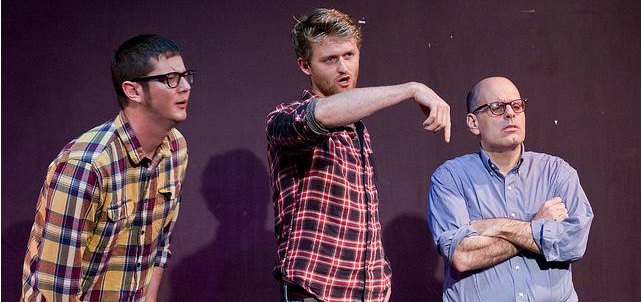3 Ways to Get Better at Editing Improv Scenes

March 6, 2019
by
Jimmy Carrane
Any improviser doing long form knows that editing can make or break a show. Good editing is balancing act between letting the improv scenes develop and not letting them go on too long to drag down the show.
Whether you’re looking to improve your editing skills, or you are an improv teacher looking for ideas on how to teach editing, I wanted to share three things that help my students become better at editing.
- Replace Walk-ons with Edits
Nothing kills a potentially great scene more than too many walk-ons. In fact, I think at least 60 percent of walk-ons could easily be edits. Sometimes I will get a class that is walk-on crazy. What I do in these situation? I will have them do a montage or 20 minutes of a scene. I tell them before we start that every time you feel the impulse to do a walk-on, I would like you to do an edit instead.The next round of scenes I may tell them to add walk-on, only if they are necessary, for example, if someone in the scene is calling out their character name. I think walks-on are used when an edit would serve the show better, and when I have students do this exercise I see their scene work get stronger and their edits get sharper because I am giving them fewer choices.
- Edit Too Soon
I love this exercise, especially if groups are sluggish with their editing. I typically start by having them do a montage or series of unrelated scenes for about 15 minutes and I instruct them to edit every scene too soon. I have found that most groups like this exercise because it is fun and really brings up the energy. As a teacher/director/coach don't be afraid to side coach if you notice that they are letting scenes go too long. You can call "edit" yourself and they seem to get right back on track.After they’ve completed the first round, ask them to do another 15 minutes of scenes with regular editing. In most cases, this will correct sluggish editing.I have also done a variation of this as a form itself. To do this, I have them do a series of very short scenes. In terms of length, think of Second City-style black-outs. You can do up to 8 to 14 short scenes depending on the size of the group. When those short scenes reach a crescendo, there will be a natural editing point where they can go into longer scenes. I have found that this form really helps with their editing throughout the show. - Freeze Tag
I never really thought of using the popular short form game Freeze Tag in long form class until I read Mick Napier’s brilliant book Behind The Scenes: Improvising Long Form. As a long form snob, I thought that Freeze Tag belonged in short form class, even though I loved playing it after Harolds at iO back in the day. If you are not familiar with Freeze Tag, here’s how it works: two players come out and get a suggestion from the audience of something they heard today and begin a scene. During the course of the scene, one of the players on the back line (or on the side, depending on the stage) yells “Freeze.” Then the two players freeze and the player from the back line takes one of the player’s positions and starts an entirely different scene. When I play it in class, I usually tell my students to edit on the laugh, or when they feel the scene has come to a completion.Now that I have been enlightened about Freeze Tag, I really cannot think of better game to teach people how to edit on the laughs than this one. Not only is it a fun game, but also it gets them to use their editing muscles without even realizing it. I usually do this toward the top of the class when I warm them up.
I am always looking for new ways to teach editing. If you have games or exercises that you have found helpful, please let me know in the comment section below.

